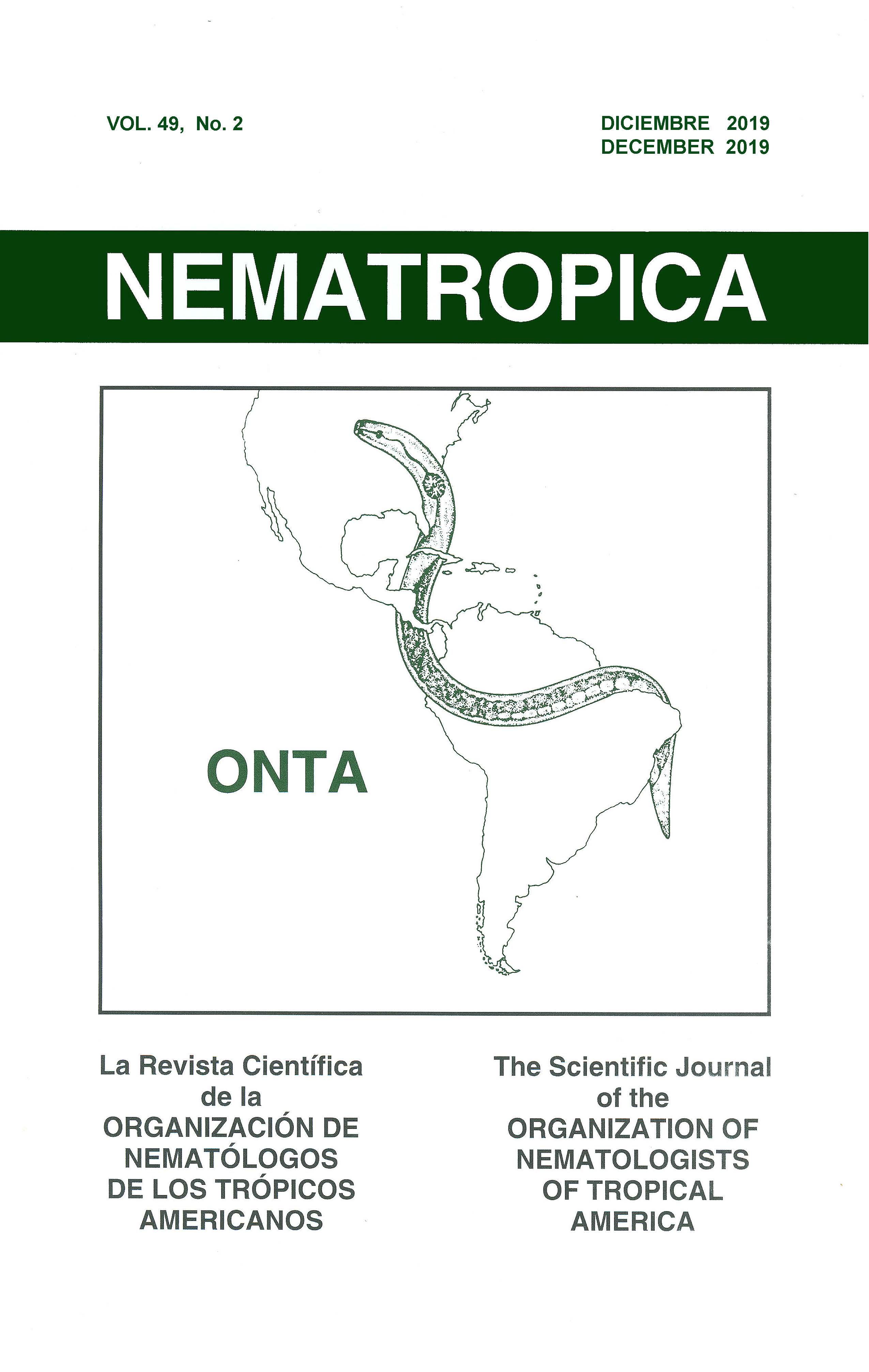PURPUREOCILLIUM LILACINUM (LILACEL®) IN THE TREATMENT OF BANANA PLANTLETS INFECTED BY PLANT-PARASITIC NEMATODES
Abstract
Among pests and diseases affecting banana crops, which ultimately lead to yield losses, the presence of plant-parasitic nematodes, such as Radopholus similis, Helicotylenchus multicinctus, Pratylenchus coffeae, and Meloidogyne spp., are to be considered. The distribution of these pathogens in the field occurs mainly via propagative material. The objective of the present study was to evaluate banana suckers cv. Comprida, naturally infected by a mixed population of R. similis (3.21%), Helicotylenchus sp. (7.91%), Meloidogyne sp. (1.37%), and Pratylenchus sp. (87.51%), under greenhouse conditions, treated with Purpureocillium lilacinum (Lilacel® 1x108 CFU/ml). Five doses of the bionematicide were tested (0.2, 0.4, 0.6, 0.8, 1.0%), plus controls of Carbofuran (Furadan® 350 SC at 4 ml/L water) and water. Banana suckers were dipped in the treatment solutions for 60 min and planted in pots filled with sterilized soil. The experiment was performed in a completely randomized design with eight replicates. The percentage of emergence and the nematode population in the soil, rhizome, and roots, as well as the reproduction factor, were evaluated after 4 months. The regression analyses between the variables were represented by linear, quadratic, and square root models. Final nematode populations were reduced in all treatments when compared to the negative control (water).

